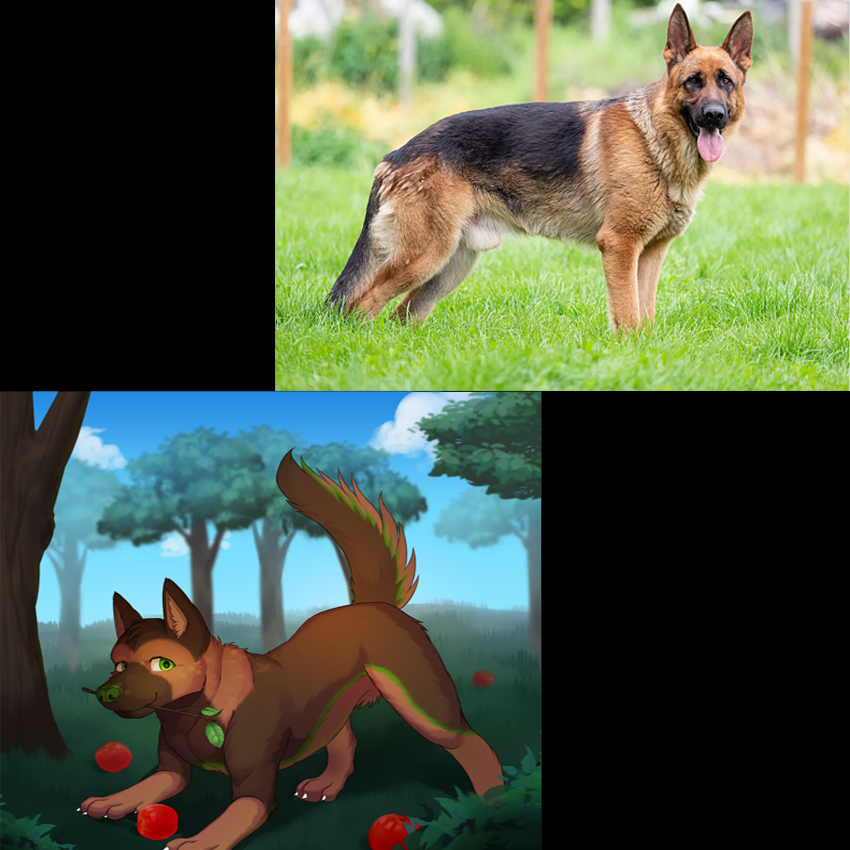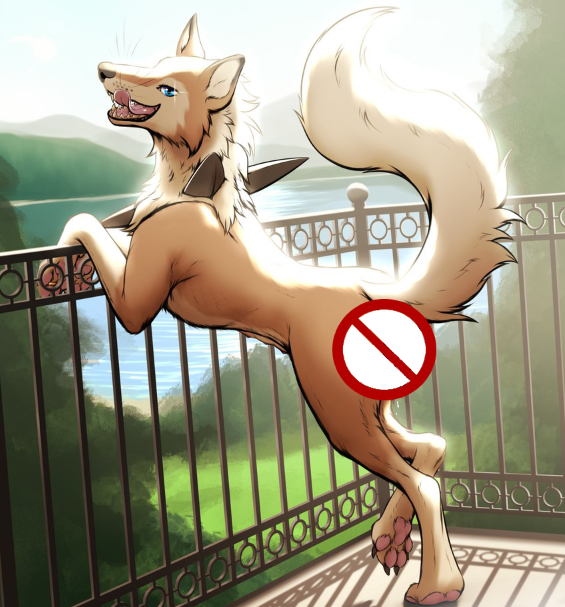Feral vs Zoo

What’s the big deal about feral art?
Here’s an odd question:
In Zootopia when they go to the ice cream parlor, did all of the dairy for that ice cream come from a talking cow or from a regular four legged cow? What are the implications of both? Does it matter?
When you get down to it, furries are fantastical creatures that are not centralized to any one creator or universe, so the “rules” for what a furry can be are quite varied. A world like Zootopia may have animal characters that lean more towards their animal sides, coming in a wide variety of sizes. They often have the character design look similar to a regular animal of that species just standing on their hind legs. Conversely, a world like Bojack Horseman may have all of the furry characters just be the average human height, and have their bodies look mostly like human-shaped bodies but with fur.
Looking at this comparison shows something interesting. Furry isn’t just one design. It’s a scale, where things can be more or less anthropomorphized, but still fall under the same “furry” umbrella. One side of that spectrum is cat girl style characters, who may have fuzzy ears but no other animal traits. But what’s the other end of the scale? What’s the farthest you can go towards animalistic while still being “furry?”
When looking at different furry worlds, one thing we can ask is, are there “regular” animals in that world too? For example, could Nick Wilde go out into the woods and spot a four legged fox, or are two legged foxes like him the only kind that exist in that world? If “regular” animals do exist in predominately anthropomorphized worlds, and those animals are able to feel and think and emote just like their two legged counterparts, in furry culture you would call those animals “feral”. In non-furry usage, “feral” describes a wild, untamed animal, but for furries, “feral” just describes an animal that goes around on all fours instead of on two legs. It’s the other end of the aforementioned spectrum.
But it gets even more complicated. Because even in examples of feral characters, there’s still a wide variety of human-ness. For example, the talking ponies in My Little Pony could be considered feral in a furry context because they go around on four legs and look mostly like regular animals, even though they have speech and a society akin to humans. But the talking lions in The Lion King could also be considered feral. They speak, which is clearly a human trait given to them, but they are meant to have the regular societal structures of their animal species. There’s a wide spectrum of what feral might shake out to in any given world.
In spite of being founded and fuelled by zoosexuals, the furry fandom has become very divided on the topic of bestiality. In real life spaces like conventions, hardly anyone cares if someone is zoosexual, it’s just not a big deal. But in online spaces, there are some people who think that bestiality is a problem that needs to be weeded out of the fandom. The odd thing is, where do you draw the line as to what “counts” as bestiality in a fandom centred around sexy animal characters? Even among those who would outcry against zoos, there are a lot of different answers to that question.
From a zoosexual perspective, it feels prudent to acknowledge two things:
One: Any sexy art of furry characters is inherently going to be at least a little zooey. Even when it comes to cat girls, they’re still at least a little bit animal.
And Two: That’s absolutely fine.
If someone thinks that a drawing of a femboy fox being mounted by a slobbering barking dog in a dog park is sexy, yeah that’s very zooey. If someone thinks that a drawing of a human woman with cat ears is a nice aesthetic and seeing that helps them get off, yeah it’s less zooey but it’s still a little zooey. It’s an attraction to animal features. It’s fine to like either of those things and not consider yourself a zoosexual irl, and it would absolutely be a stretch to call kissing a cat girl bestiality because of the ears alone, but on the other hand it would also be disingenuous not to acknowledge that there is at least a zoosexual flavor in the air there.
So how are people coming up with the line for what is judged as too much animal? One classic approach for deciding what “counts” as bestiality is something called the Harkness Test, which is a test devised to determine whether or not it’s okay to have sex with a fantastical creature. This test asks three questions: 1) Does the creature have human intelligence or greater? 2) Can it talk or otherwise communicate with language? 3) Is it of sexual maturity for its species?
As far as litmus tests, it’s pretty bad. Especially for how widespread it is. These questions all examine the mental state of the creature, rather than whether they look like an animal or not. So by these rules, you could totally smash Nala from the Lion King, if that’s what you’re into.
But… sticking your dick in a Lioness still seems a lot like bestiality. Like, a looooot like bestiality. Sure, she can talk, but when you grab a lion by the flanks and put your human penis inside her feline female parts seems difficult to ignore the bestiality-ness of. Especially considering, as we’ve established, the setting of The Lion King falls towards the animalistic side even when it comes to feral universes. And you can even make it more confusing. What about a world where animals can talk to each other, but can’t be understood by the humans? If a human has sex with a dog after it was just shown having a conversation with another dog, but in the human’s perspective all it does is bark, that creature still checks all the boxes, but only to the audience, not to the human character in the sexual encounter.
Also, sidebar, but I would not have a problem saying my real life dog passes the Harkness Test with flying colors. He’s a smart guy with his own interests, he’s great at expressing himself and what he wants, and he is an adult of a species that reproduces sexually. Someone with less charitable ideas about animal personhood would probably disagree with me, but as someone who knows him it feels blindingly obvious that he can communicate what he likes. Anyways, sidebar over.
So where does that leave us in terms of the difference between what’s feral, what’s furry, and what’s just plain zoo? In the end, it’s all just up to the one interpreting the art. Picture an image of a man having sex with a horse. In one version, the horse is saying “Ooh aah”. In another, they’re saying “Neigh”. In the third, they aren’t saying anything at all. You could consider the one where the horse is “ooh-ing” to be feral, the one where they’re neighing to be zooey, and the silent one up to interpretation. But at the end of the day, they’re all the same picture.
The biggest takeaway from this little thought experiment is that the adage “Calm down son, it’s just a drawing” is one to live by. It’s drawn porn of fictional characters. It’s okay to be interested in that in a zooey way or a not-as-zooey way. Art is art, and people like what they like. But for furries who are critical of feral art, it’s important to remember that you’re still spending 100 dollars on a meticulously modelled realistic recreation of a horse dick.
Article written by an anonymous author (September 2022)
Questions, comments, or concerns? Check out the discussion thread on ZooCommunity down below, or join our discord!

